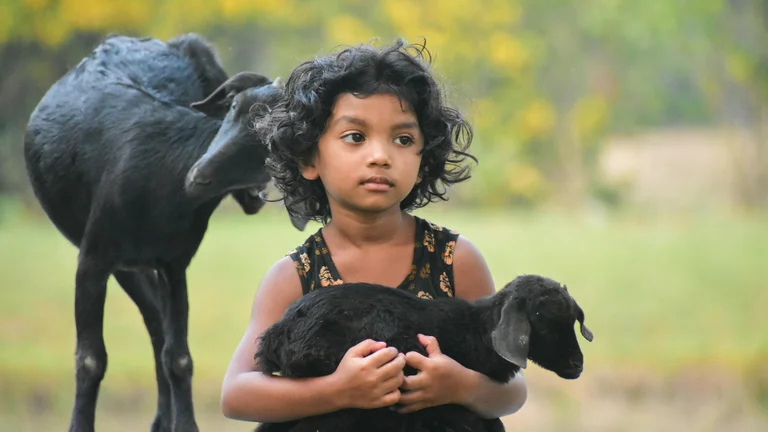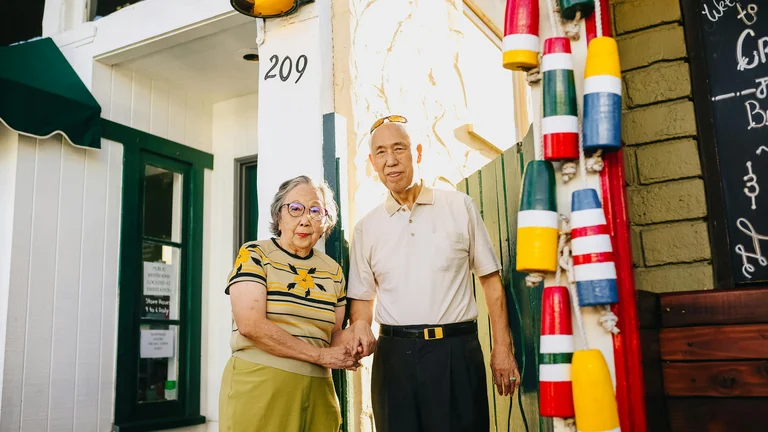
Hand-holding scenes in K-dramas serve as some of the most potent visual and emotional moments that captivate viewers worldwide. These seemingly simple gestures embody a complex range of feelings—nervousness, yearning, comfort, intimacy, and unspoken promises—all conveyed without words. The subtle act of hand-holding carries symbolism that transcends cultural boundaries, yet in Korean dramas, it acquires a distinctive charm, rich with subtext. This article delves deep into the anatomy of heart-fluttering hand-holding scenes in K-dramas, exploring their cinematic execution, narrative importance, emotional resonance, contextual variations, and impacts on fandom culture.
Unlike extravagant romantic displays, hand-holding scenes often rely on minimalism and nuance, showcasing delicate eye contact, trembling fingers, hesitant movements, or firm reassurance. This restrained expression aligns with Korean cultural values emphasizing modesty and indirect communication of feelings. The artistry behind these moments reflects not just screenplay writing but also direction, cinematography, acting, and music. Every frame is intentionally composed to magnify the subtle crescendo of emotion rising beneath the surface.
The Symbolic Layers of Hand-Holding in K-Dramas
To appreciate the depth of hand-holding scenes, it is critical to understand the symbolic layers embedded within. In K-dramas, such contact often transcends mere physical touch; it acts as a narrative shortcut for emotional connectivity. Holding hands can signify multiple stages of a relationship—initial affection, growing trust, reconciliation, or even unspoken vows.
For instance, the trembling or hesitant grip commonly seen in early episodes typically symbolizes vulnerability and the tentative step into new emotional territory. Contrasting this are scenes where the hand is grasped firmly with confidence, illustrating protection, possessiveness, or reassurance. Sometimes, hand-holding happens unexpectedly, surprising both characters and viewers, amplifying the element of spontaneity and subtle thrill.
Moreover, the context in which hand-holding occurs influences its meaning profoundly. Public hand-holding in K-dramas is rare compared to Western dramas, reflecting societal attitudes towards public displays of affection. When it happens, it often carries a narrative weight signaling a breakthrough—characters openly admitting their feelings despite social constraints.
In more private or vulnerable settings, holding hands serves as comfort during distress, an intimate gesture that bridges emotional chasms without dialogue. Such variance in context provides a spectrum of emotional experiences, enriching the dramatization of romance uniquely characteristic of Korean dramas.
Cinematic Techniques Amplifying Emotional Intensity
The effectiveness of hand-holding scenes depends heavily on cinematic techniques that accentuate the emotional charge. Close-up shots are frequently employed to isolate the hands, drawing viewers’ focus purely to this tactile connection. Slow-motion sequences often underscore the moment’s significance, allowing audiences to savor the sensory intimacy.
Lighting plays a crucial role as well. Soft, warm lighting tends to accompany tender hand-holding moments, symbolizing warmth and safety, whereas dim, shadowy lighting might frame more conflicted or secretive interactions. Cinematographers skillfully utilize angles that showcase the characters’ faces reflecting emotion simultaneously, intertwining visual cues of touch and expression.
Another frequently observed technique is the use of shallow depth of field to create a blurred background, literally isolating the hands and intensifying the intimacy. Subtle hand movements, such as fingers intertwined or lightly squeezing the partner’s hand, are meticulously choreographed to communicate complexity—from shyness to assertiveness.
Background music or ambient sound design further elevates these scenes. The choice of gentle piano or acoustic melodies often reinforces emotional vulnerability, while moments of silence emphasize the tension and expectancy of unspoken feelings. The interplay between visual and auditory stimuli makes hand-holding scenes memorable and deeply affecting.
Iconic Hand-Holding Scenes in Popular K-Dramas
Several K-dramas have cemented their place in fan memory with unforgettable hand-holding scenes that resonate beyond the screen. Examining these moments helps illustrate the diversity and emotional power embedded in this trope.
In "Goblin" (Guardian: The Lonely and Great God), the scene where Ji Eun-tak clutches the Goblin’s hand for the first time carries immense narrative weight. It marks her acceptance of her fate intertwined with his, simultaneously sparking warmth and melancholy. The moment is slow, deliberate, and layered with surreal lighting emphasizing destiny and melancholy.
Another remarkable example is from "Weightlifting Fairy Kim Bok-joo," where the leads tentatively grasp each other’s hands during an awkward yet heartfelt confession. The trembling hands express youthful innocence and the tentative thrill of new love. The scene is framed with soft pastel colors and playful camera angles, reflecting the buoyant yet nervous feelings of first love.
In "Crash Landing on You," the protagonists’ contrasting cultural backgrounds add additional tension to their hand-holding moments. When Ri Jeong-hyeok takes Yoon Se-ri’s hand unexpectedly, the physical gesture communicates safety, trust, and a quiet defiance against external threats. The tension between fear and solace is palpable, amplified by cold, snowy backdrops that evoke isolation yet warmth through touch.
Psychological and Emotional Impact on Viewers
The universal appeal of hand-holding scenes lies partly in their capacity to trigger physiological and emotional responses in viewers. Psychologically, observing gentle touch gestures activates mirror neurons in the brain, fostering empathy and emotional mirroring. This neurological response explains why viewers physically feel warmth, comfort, or fluttering sensations while watching such scenes.
Moreover, hand-holding symbolizes connection and acceptance, which appeals to innate human desires for intimacy and belonging. The restrained yet meaningful depiction aligns with viewers' yearning for subtle emotional cues in a world often dominated by overt displays. This emotional engagement enhances the immersive experience of K-dramas, making viewers more invested in characters' journeys.
Fan communities often discuss these scenes extensively, dissecting finger placements, hand grip firmness, and context, elevating hand-holding to a subject of intense emotional scrutiny. This engagement creates shared moments of excitement and emotional release, transforming passive watching into an interactive emotional event.
Table: Emotional Nuances Conveyed Through Hand-Holding
| Type of Hand-Holding | Typical Emotional Conveyance | Common Contexts | Example K-Drama Scene |
|---|---|---|---|
| Tentative, trembling grip | Vulnerability, new affection, nervousness | First contact, confession scenes | Kim Bok-joo's first touch in "Weightlifting Fairy Kim Bok-joo" |
| Firm hold with slight squeeze | Protection, reassurance, possessiveness | Conflict resolution, emotional comfort | Goblin comforting Eun-tak in "Goblin" |
| Intertwined fingers | Deep intimacy, commitment, mutual trust | Romantic milestones, secret moments | Crash Landing on You, Jeong-hyeok and Se-ri’s private moments |
| Unexpected quick grab | Spontaneity, surprise, urgency | Crisis moments, sudden confession | Unexpected touch in "Healer" during tense scenes |
The Cultural Context: Restraint and Expression
Korean societal norms traditionally lean towards modesty in expressing affection publicly. This cultural framework influences how hand-holding is portrayed in K-dramas, often balancing emotional expressiveness with subtle restraint. In contrast with Western dramas, where overt romantic displays are frequent, K-dramas utilize hand-holding as a measured yet powerful symbol of connection.
This restraint often increases the emotional payoff. The rarity of public hand-holding scenes means when they occur, they are imbued with heightened significance, reflecting a character’s willingness to break from social conventions for love. It also mirrors real-life cultural attitudes, providing relatable authenticity for domestic audiences, while offering fascinated foreign viewers insight into Korean romantic sensibilities.
Foreign fans sometimes find themselves deeply drawn to the delicacy of these scenes, appreciating the layered meanings behind each touch. The emotional subtlety is often cited as a defining reason why K-dramas resonate on a global scale, marrying cultural specificity with universal feelings.
Step-by-Step Breakdown of a Memorable Hand-Holding Scene
Analyzing a single hand-holding moment in detail offers insight into the craftsmanship involved. Consider a typical K-drama hand-holding scene:
- Setup: The scene usually begins with characters in a charged emotional state, perhaps following a confrontation or confession. The background sets an intimate tone—often a dimly lit room or a serene outdoor setting.
- Eye Contact: Close-ups reveal nervous or searching eyes, generating anticipation. Often, characters hesitate, building tension.
- Movement: One character slowly reaches out, hand slightly trembling, signaling vulnerability or desire.
- Contact: Fingers touch lightly, followed by a gentle grasp. The duration varies to emphasize emotion—from brief, tentative touches to lingering holds.
- Physical Reaction: Skin flush, quickened breath, or subtle smiles enhance the realism of the moment.
- Music and Sound: Supporting soundtrack swells or softens, underlining emotional cues.
- Camera Angle: Transition from wide shots to tight focus on hands and faces intensifies connection.
- Aftermath: Characters may share a look, blink away tears, or smile shyly, reinforcing narrative progression.
This structure may vary, but it reflects a rhythm designed to maximize emotional engagement and narrative impact.
List: Key Elements Making Hand-Holding Scenes Heart-Fluttering
- Delicate choreography of hand movements to express nuanced emotions
- Strategic use of close-ups and cinematographic focus
- Complementary lighting that reinforces the mood
- Subtle facial expressions accompanying touch
- Contextual build-up within the storyline to heighten anticipation
- Soundtrack or sound design that supports emotional tone
- Physicality showing physiological reactions like blushing or trembling
- Cultural nuances influencing public versus private settings
Comparative Overview of Hand-Holding Portrayals in Different K-Drama Genres
K-Dramas span a range of genres—romantic comedy, historical, fantasy, melodrama—with hand-holding scenes adapting accordingly to thematic demands. Understanding the adaptations highlights the versatility and intention behind these moments.
In romantic comedies, hand-holding often carries a playful or awkward quality. Characters might fumble or blush exaggeratedly, emphasizing lightheartedness and youthful explorations of affection. The tone is upbeat, supported by brighter visuals and lively music. For example, "Strong Woman Do Bong-soon" uses hand-holding to denote growing closeness amid comedic setups.
Historical dramas approach hand-holding with added layers of societal norms and class distinctions. Touches may be furtive, laden with risk, symbolizing forbidden love or rebellion. The pacing is often slower, and the lighting dimmer to evoke period atmospheres. "Moon Lovers: Scarlet Heart Ryeo" exemplifies hand-holding as a rare, charged gesture amid court intrigues.
Fantasy K-dramas infuse hand-holding scenes with mystical or supernatural significance. Hands might glow faintly, or the gesture might trigger magical effects, blending physical touch with fantastical elements. In "Goblin," such moments are not only romantic but also tied to destiny and fate.
Melodramas use hand-holding to amplify emotional pain, sacrifice, or reconciliation. The gesture is frequently framed amidst tears or hospital rooms, emphasizing hardship and emotional depth. "Something in the Rain" showcases hand-holding as a silent declaration amidst societal pressures and internal conflict.
Table: Hand-Holding Scene Characteristics by Genre
| Genre | Hand-Holding Characteristics | Emotional Tone | Representative K-Drama |
|---|---|---|---|
| Romantic Comedy | Playful, awkward, shy | Lighthearted, hopeful | "Strong Woman Do Bong-soon" |
| Historical | Secretive, restrained, cautious | Forbidden, tense | "Moon Lovers: Scarlet Heart Ryeo" |
| Fantasy | Symbolic, mystical, fateful | Magical, profound | "Goblin" |
| Melodrama | Emotional, intense, sorrowful | Heartbreaking, poignant | "Something in the Rain" |
Role of Actors’ Performances in Elevating Hand-Holding Scenes
The nuanced delivery of hand-holding scenes depends heavily on actors' subtle physical and emotional expressiveness. Skilled performers convey internal struggles, affection, or hesitancy through micro-expressions—slight quivers of the lips, averted gazes, or controlled breathing rhythm. Their ability to sync body language with the touch creates authenticity, inviting viewers into the intimate moment.
When actors adeptly modulate the timing of the contact—from a delayed reach to a spontaneous grab—they shape narrative tension and character dynamics. Experienced actors also exploit stillness effectively, letting silence and minimal movement speak volumes. This artfulness transforms what could be a simple gesture into a pivotal scene charged with emotional texture.
Fandom Culture and Social Media's Amplification of Hand-Holding Scenes
In the age of digital media, hand-holding scenes in K-dramas frequently become viral content, shared as GIFs, clips, or memes across social platforms. Fans dissect these moments, creating edits that emphasize the intensity or cuteness of the contact. This participatory culture enhances the significance and enjoyment of hand-holding scenes, extending their life beyond the episode airing.
Fan communities generate detailed discussions about specific hand movements or the chemistry reflected through touch, often linking these observations to character arcs or relationship predictions. This communal engagement fosters a shared emotional connection, building anticipation for upcoming episodes or sequels.
Moreover, merchandise inspired by iconic hand-holding scenes—such as phone cases, figures, or art prints—illustrates the commercial and cultural impact of these moments. They become symbolic artifacts of fandom affection, reinforcing the narrative and emotional power embedded in simple gestures.
Practical Guide: How to Film an Effective Heart-Fluttering Hand-Holding Scene
Capturing an effective hand-holding scene involves multiple layers of coordination across the production team. Below is a practical guide emphasizing key steps:
- Script Writing: Ensure the moment aligns with character development and narrative pacing. The scene should carry emotional weight justified by preceding events.
- Direction: Communicate the desired emotional tone to actors. Use rehearsal time to fine-tune hand movements and reactions.
- Cinematography: Employ close-ups, slow-motion, and shallow focus to isolate hands and expressions. Adjust lighting to fit mood.
- Sound Design: Select music or silence strategically to support emotional intensity.
- Acting: Encourage natural, controlled physical expressions. Subtlety is key; exaggeration undermines sincerity.
- Editing: Pace the scene to maximize build-up and release. Avoid cutting too quickly or lingering unnecessarily.
Following these steps ensures the hand-holding scene becomes a memorable, emotionally resonant moment that enhances the overall storytelling.
FAQ - Heart-Fluttering Hand-Holding Scenes in K-Dramas
Why are hand-holding scenes so significant in K-dramas?
Hand-holding scenes in K-dramas encapsulate complex emotions such as vulnerability, trust, and affection in a subtle and culturally resonant way, making them powerful storytelling tools that convey intimacy without explicit dialogue.
How do K-dramas use hand-holding differently compared to Western dramas?
K-dramas often depict hand-holding with more restraint and subtlety reflecting cultural norms, focusing on emotional nuance rather than overt displays, which heightens the emotional impact when such gestures occur.
What cinematic techniques are commonly used to enhance hand-holding scenes in K-dramas?
Techniques such as close-up shots, slow motion, soft lighting, shallow depth of field, and carefully chosen background music are employed to amplify the intimacy and emotional intensity of hand-holding scenes.
Can you give examples of iconic hand-holding scenes in popular K-dramas?
Yes, key examples include the first hand-hold in "Weightlifting Fairy Kim Bok-joo," the tender grips in "Goblin," and the contrasting cultural hand-holding moments in "Crash Landing on You," each carrying distinct emotional weight.
How do actors contribute to the effectiveness of these scenes?
Actors utilize micro-expressions, controlled movements, and timing to convey internal emotions, making hand-holding scenes authentic and emotionally engaging, transforming simple gestures into powerful narrative beats.
Heart-fluttering hand-holding scenes in K-dramas embody profound emotional connection through subtle gestures, combining cultural restraint and cinematic artistry. These moments are crafted with nuanced acting and visual techniques, making them pivotal and memorable in Korean storytelling.
Heart-fluttering hand-holding scenes in K-dramas epitomize a refined art of storytelling where minimalism meets emotional depth. Through symbolic gestures, careful cinematic crafting, and culturally nuanced portrayals, these moments transcend their physical simplicity, becoming powerful connectors between characters and audiences. Their influence extends into fandom culture and global appreciation, reflecting the universal language of touch as a vessel for affection, vulnerability, and trust.






